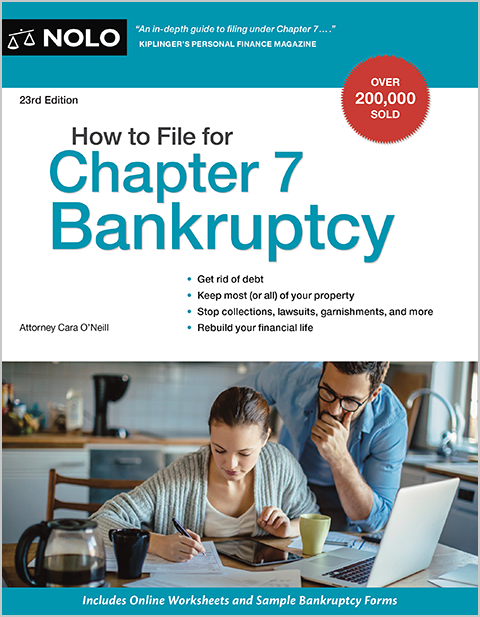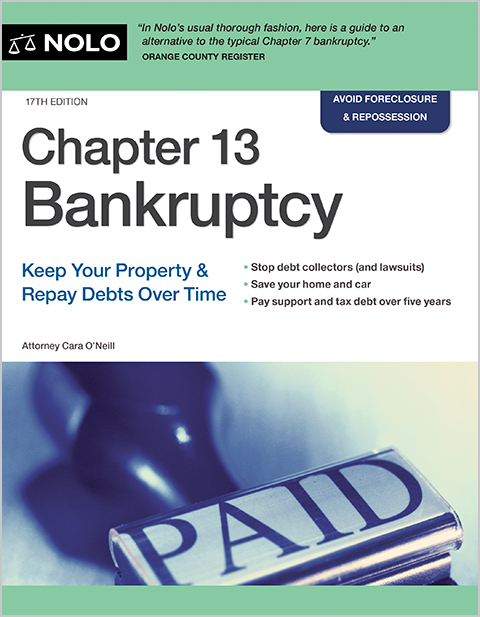Learn how to use bankruptcy exemptions to keep property in Chapters 7 and 13.
Bankruptcy exemptions play a significant role in both Chapter 7 and Chapter 13 bankruptcy because exemptions protect your property from creditors. In Chapter 7 bankruptcy, you can keep property covered by a bankruptcy exemption. In Chapter 13 bankruptcy, exemptions help keep your plan payments low.
Read on to learn more about bankruptcy exemptions and how they work, including what they are, how to use exemptions in Chapters 7 and 13, and the differences between state and federal bankruptcy exemptions.
What Are Bankruptcy Exemptions?
Exemptions allow you to keep some assets safe in bankruptcy, such as an inexpensive car, professional tools, clothing, and a retirement account. If you can exempt an asset, you don't have to worry about the bankruptcy trustee appointed to your case taking it and selling it for your creditors' benefit if you can't afford to pay to keep it.
Many exemptions protect specific property types, such as motor vehicles or furniture, up to a particular dollar amount. Sometimes, an exemption protects the entire value of the asset. Some states have a "wildcard exemption" that can be applied to any property you own. Sometimes, you'll own property that isn't covered, making it entirely or partially "nonexempt." What happens to nonexempt property depends on whether you file for Chapter 7 or 13 (more below).
How Do Bankruptcy Exemptions Work?
Exemptions always protect the same amount of property regardless of the chapter filed. However, what happens to "nonexempt" property you can't protect with a bankruptcy exemption will depend on whether you file for Chapter 7 or Chapter 13 bankruptcy.
Chapter 7 Bankruptcy and Exempt Assets
Chapter 7 is a liquidation bankruptcy where the appointed trustee sells your nonexempt assets to pay creditors. Exemptions help you protect your assets in Chapter 7 bankruptcy because the bankruptcy trustee can't sell exempt property.
For example, suppose your state has a $5,000 motor vehicle exemption, and you have one car worth $4,000. In that case, the exemption will cover all of the car's equity, and you can keep it. For more information about keeping a car in Chapter 7 and other property, see Exemptions in Chapter 7 Bankruptcy.
Chapter 13 Bankruptcy and Exempt Assets
A Chapter 13 bankruptcy allows you to keep all your property while paying some or all of your debt in a three- to five-year Chapter 13 repayment plan. But this benefit comes at a cost. You'll have to pay nonexempt creditors for the property you can't protect with an exemption.
Nonpriority unsecured creditors, such as credit card issuers, must receive at least as much as the value of the property you can't exempt. So, in Chapter 13 bankruptcy, being able to exempt all or most of your property helps keep your monthly plan payment low. Learn more about exemptions in Chapter 13 bankruptcy.
State and Federal Bankruptcy Exemptions
Each state has a set of bankruptcy exemptions, and federal law provides a federal bankruptcy exemption set, too. Some states require you to use the state exemptions, while others allow you to choose the state or the federal bankruptcy exemption set. But you must choose one or the other--you can't mix and match exemptions from two sets.
The state's exemption laws you'll qualify to use will depend on where you lived during the last two years, called the "domicile requirements." Learn more about when you can use a particular state's exemptions.
Federal Nonbankruptcy Exemptions
A second set of federal exemptions called "federal nonbankruptcy exemptions" can be used along with your state's exemptions. For more information, see The Federal Nonbankruptcy Exemptions.
Need More Bankruptcy Help?
Did you know Nolo has made the law accessible for over fifty years? It's true, and we wholeheartedly encourage research and learning. You can find many more helpful bankruptcy articles on Nolo's bankruptcy homepage. Information needed to complete the official downloadable bankruptcy forms is on the Department of Justice U.S. Trustee Program.
However, online articles and resources can't address all bankruptcy issues and aren't written with the facts of your particular case in mind. The best way to protect your assets in bankruptcy is by hiring a local bankruptcy lawyer.

